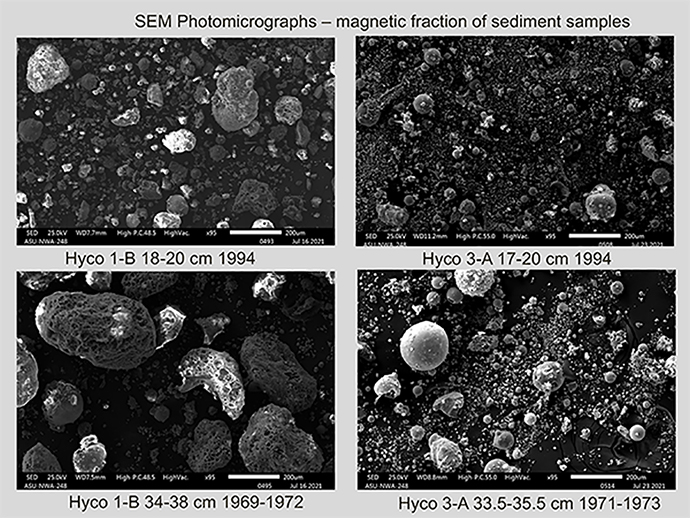Wang, Z., Cowan, E.A., Seramur, K.C., Dwyer, G.S., Wilson, J.C., Karcher, R., Brachfeld, S., and Vengosh, A., 2022, Legacy of coal ash combustion: Widespread contamination of lake sediments and implications for chronic risks to aquatic ecosystems: Environmental Science & Technology.
This National Science Foundation funded research documented the previously unknown releases of coal ash from storage ponds near coal-fired power plants into five lakes in North Carolina. The lakes were originally constructed to provide cooling water to the plants but now they are used for recreation, including swimming, fishing and boating. Sediment cores collected both upstream and downstream of the ash ponds were dated using 210Pb and !37Cs, and elevated concentrations of hazardous metals were measured at Duke University. In the Department of Geological and Environmental Sciences at Appalachian State University, the amount and morphology of ash within the lake sediment was determined. Randall Karcher, a May 2022 graduate contributed an important dataset generated in the ASU Microscopy lab. He imaged the magnetic fraction of coal ash extracted from sediment cores (see accompanying figure). These images confirmed that the morphology of the ash spilled into the lake changed when the Clean Air Act was enacted (in the late 70’s). Ash deposited earlier is larger and amorphous while later ash includes small spherical particles with high toxic metals concentrations. These small particles were previously emitted from the plant as air pollution but were later retained on site as waste within coal ash ponds. SEM photomicrographs also show sorting of ash as it travels through the lake from upstream (Hyco-1) to downstream (Hyco-3).

